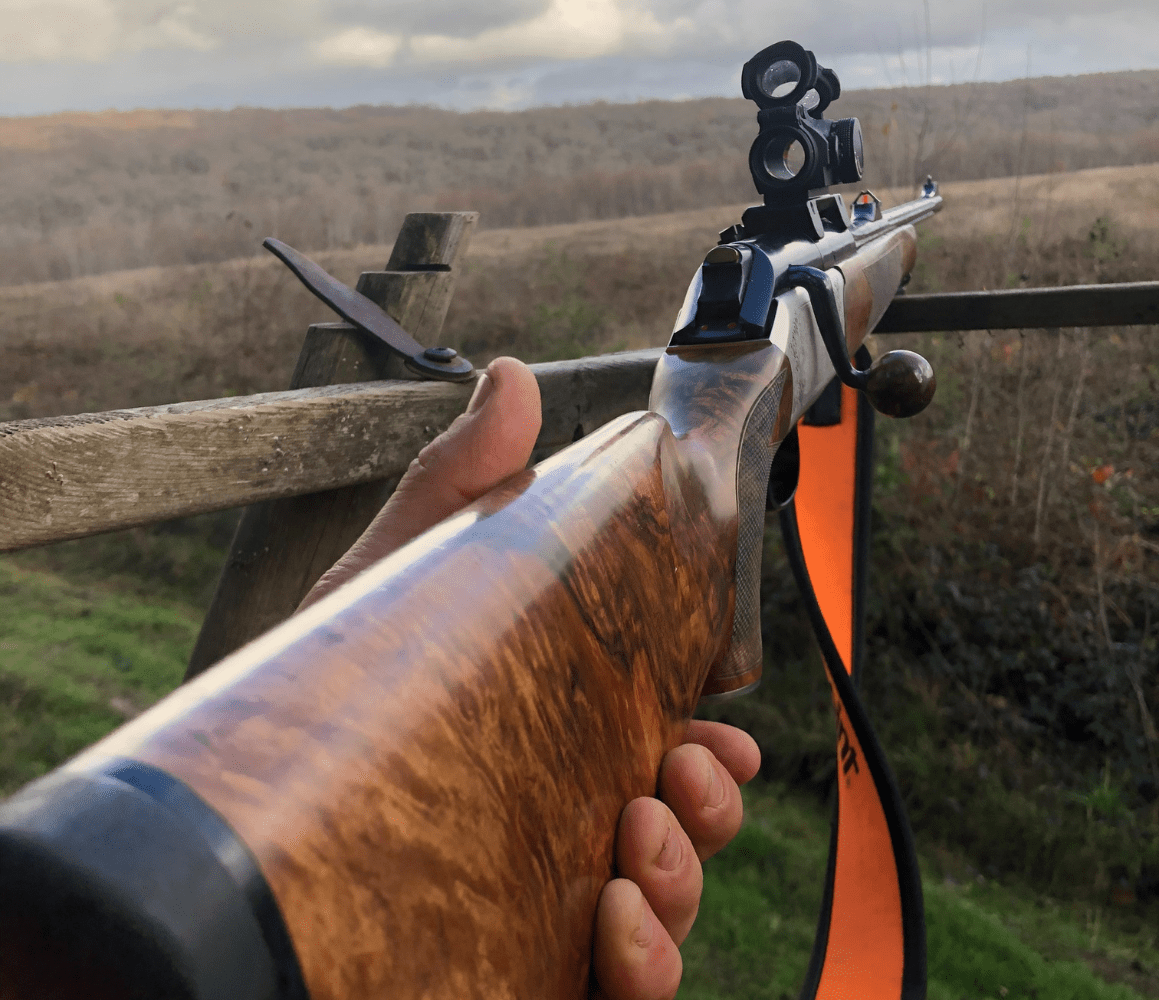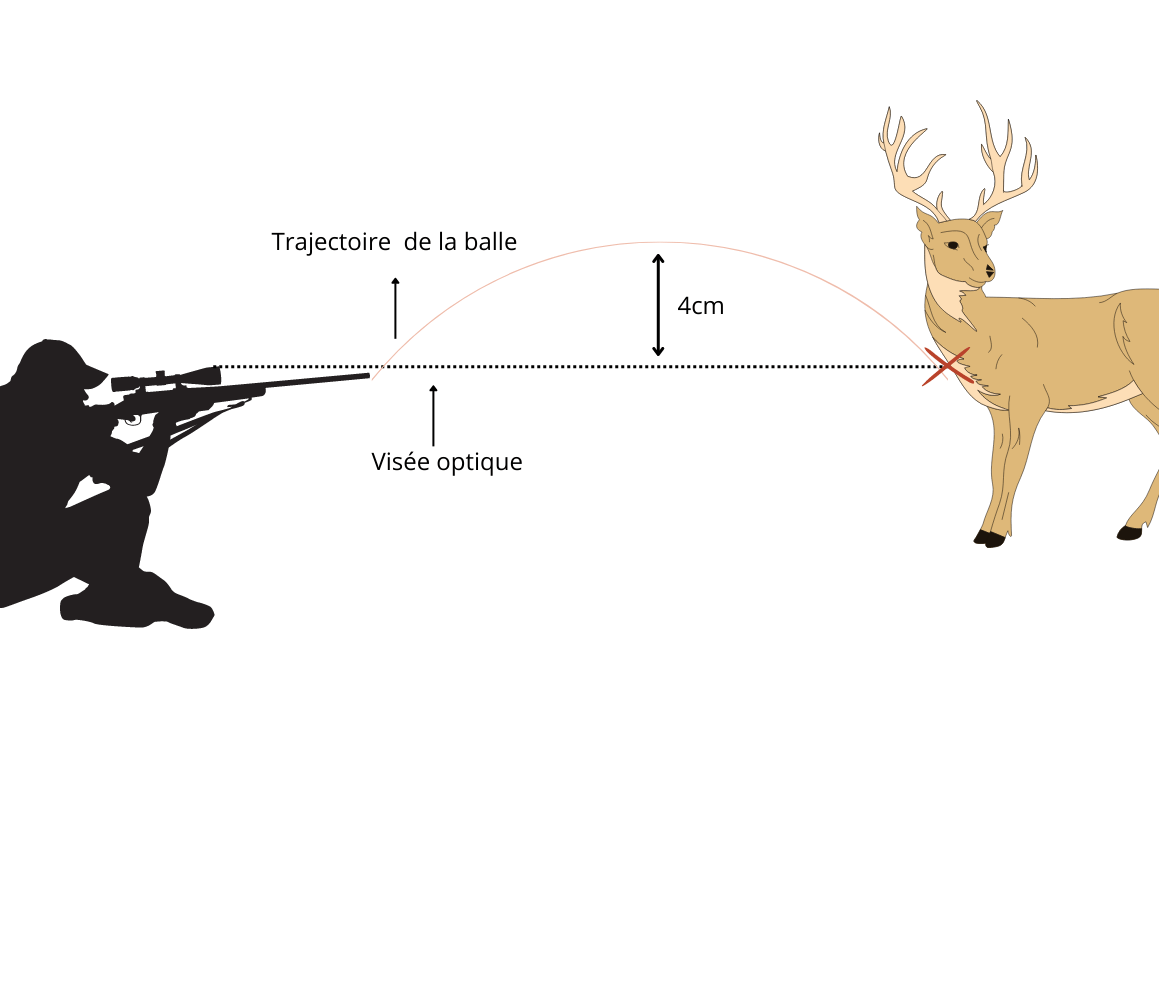Un nouveau réseau de distribution
Fruit de notre alliance avec le groupe Beretta, nous sommes heureux d’officialiser notre nouveau réseau de distribution mondial avec les 14 principales filliales étrangères

Knowing how to shoot properly means above all knowing how to adjust your rifle correctly. An incorrectly adjusted rifle is dangerous both for the shooter and for other shooters.
Apart from the safety aspect, incorrect adjustment will affect the accuracy of your shot. You risk wounding the hunted animal rather than killing it.
Adjusting your hunting rifle correctly will not only ensure your safety and that of others, it will also guarantee maximum shooting efficiency, so that you get the perfect kill from the animals you have selected.

Before you start adjusting your hunting rifle, there are a few rules to follow.
Make sure you set up your rifle in a well-lit area and that it’s not too windy. The temperature outside also plays an important role. Avoid adjusting your rifle when it’s too hot (above 38°C). High temperatures can lead to over-pressurisation of the ammunition and therefore affect the shot.
Ensure that your magazine is correctly positioned and properly loaded. Please note that each load has its own setting, and depending on the brand used, the type of ammunition, the weight or the powder load, the settings on your carbine will be different.
If you add accessories (scope, red dot, sound moderator), your carbine will also be set differently. To ensure accurate adjustment, it is vital that the accessories (the interface between your carbine and the optics) are fitted without any play.
Adjustment must always be carried out with the shot supported. Never rest the rifle on the barrel, but always on the fore-end. Stabilise the rifle with a trestle.
Before firing any adjustment shots, fire a cartridge to degrease and “flame” the barrel. Mark the degreasing impact on the target so that it is not confused with the adjustment impact.
If you are using a rifle scope, make sure it is correctly adjusted. Scopes are generally equipped with elevation and drift adjustments.
Turn the adjustment knob on the top of the scope clockwise to raise the shot (screw in to raise, screw out to lower).
Then turn the drift adjustment knob on the side of the scope clockwise to shift the shot to the right (screw in to go right, unscrew to go left). Note that on some rifle scopes, the adjustment may be made in the opposite direction.
Shoot 3 bullets, aiming for the centre of the target. Press the trigger gently to avoid moving the rifle as you fire.
After the 3 shots, you need to determine the average point of impact in order to work out what corrections need to be made. The DRO (Optimum Setting Distance) must then be calculated.


The DRO is calculated from two trajectories: the optical sight (from the rifle scope to the point of impact) and the bullet trajectory (from the barrel to the point of impact).
The bullet trajectory crosses the optical sight twice. As the barrel is located below the scope, the bullet will exit below the optical sight, generally 4 cm below. The bullet’s trajectory will then cross the optical sight to end up 2 cm above it at a distance of 50 m.
DRO corresponds to a range such that the bullet never rises more than 4 cm above the weapon’s line of sight. This range is generally reached at a distance of 100 m. With the effect of gravity, the bullet will then descend naturally and cross the optical sight at its centre for a second, this is the DRO.
This calculation guarantees maximum shooting efficiency: if the animal is well adjusted, your shot will hit the mark.
Once the DRO has been determined, fire three more shots to check that the point of impact is 4 cm above the target at 100 m or 2 cm above it at 50 m.
With these settings and depending on the calibre you’re using, you’ll be aiming into the mile at a distance of 160 to 200 m.
If you are shooting at long range (100 m or more), the other bullets should only be fired to finish off an animal that has not been killed but wounded in the first shot. The bullets must not be used to shoot an animal that has missed.

Fruit de notre alliance avec le groupe Beretta, nous sommes heureux d’officialiser notre nouveau réseau de distribution mondial avec les 14 principales filliales étrangères
Fruit de notre alliance avec le groupe Beretta, nous sommes heureux d’officialiser notre nouveau réseau de distribution mondial avec les 14 principales filliales étrangères
Fruit de notre alliance avec le groupe Beretta, nous sommes heureux d’officialiser notre nouveau réseau de distribution mondial avec les 14 principales filliales étrangères
Fruit de notre alliance avec le groupe Beretta, nous sommes heureux d’officialiser notre nouveau réseau de distribution mondial avec les 14 principales filliales étrangères
Fruit de notre alliance avec le groupe Beretta, nous sommes heureux d’officialiser notre nouveau réseau de distribution mondial avec les 14 principales filliales étrangères